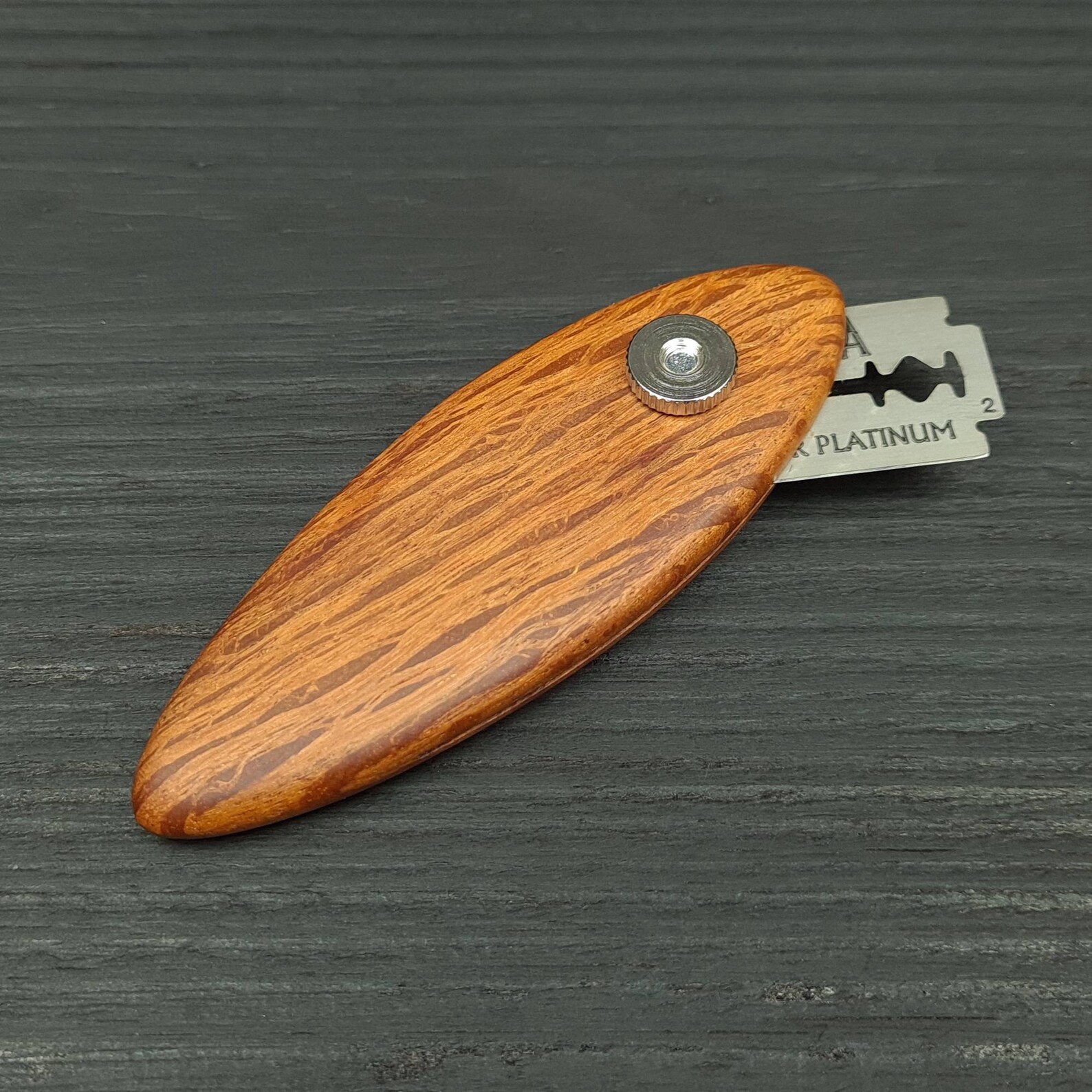

METAL HANDLE BREAD LAME SERIES
We can choose a single, long slash for a dramatic opening or a series of slashes that slightly overlap each other for multiple ears, as with a baguette.

The curve of the blade encourages a flap of dough to form when sliced, and it’s this flap that gets pushed upward and peels back as the dough rises in the oven. Use a curved blade to score dough when you desire to have a pronounced ear, or raised area of the crust (as seen above). Let's first discuss using a curved blade. In this post we'll look at bread that was baked using my recent Fresh Milled Spelt Sourdough Bread recipe. The cold dough has a tight, firm surface that holds its shape as the sharp blade cuts through.Īlso: change your scoring blade often! A sharp razor glides through properly fermented dough in a swift, satisfying cut. I also find that warm dough can be slightly more challenging to score than cold dough proofed in the fridge. Proof the dough for less time, or at a lower temperature, next time. I f the blade drags excessively, this can be a sign that the dough has most likely proofed for too long and has started to lose structural integrity. Continue with the cut and things will typically smooth out in the bake. If the blade drags against the dough, don’t fret. I hold the blade lightly between my fingers, but in a firmly locked hand, and move with a single, smooth cutting motion. How we score partly depends on how the dough is positioned in front of us: if the dough is horizontal to the body it may be easier for us to cut away, and conversely, if it’s vertical (as mine always is) cutting inward might be a better choice.Īs a general rule, it’s best to have a speedy, sure hand when scoring. However, as with many things in baking, there are no steadfast rules and each baker should experiment and decide what feels and works best.įor example, some bakers prefer to score with the cutting side of the blade angled away from the body, whereas others (myself included) prefer to score so the blade cuts inward toward the body. In this post, we’ll talk about several dough-scoring implements, the strengths of each, and what type of dough warrants their use.
METAL HANDLE BREAD LAME HOW TO
King Arthur has a video on how to slash a baguette, but there are many other approaches, several of which we'll tackle in this article. Regardless of the scoring choice, the goal is to guide the dough into rising predictably, consistently, and optimally. Some bakers opt for a single, long slash (my favorite), whereas others prefer lots of small slashes that together form a beautiful, artistic design. Scoring bread dough is yet another part of the baking process where we can each leave our own individual touch on the final baked loaf. We sometimes desire this type of ragged opening, but if you want the optimal height in a controlled and consistent manner, scoring is the way to go. Without this step, dough can open in unexpected areas and in a rather chaotic manner. Most bread bakers score the dough with a blade (or lame) to create a weak point and direct the rapid expansion.
METAL HANDLE BREAD LAME CRACK
The weakest spots in the dough's surface - whether intentional or accidental- will give way and crack open. Through this rapid production of gasses, the dough is forced to spring up and push against the taut surface created during shaping. When we load dough into the oven, the intense heat causes it to rise rapidly by expediting the fermentation process.

But aesthetics aside, there’s also an important purpose to cutting - or scoring - bread dough before it’s baked. Our eyes are drawn to beautiful loaves of bread with their dramatic “ear” from across the surface or intricate pattern on top.


 0 kommentar(er)
0 kommentar(er)
